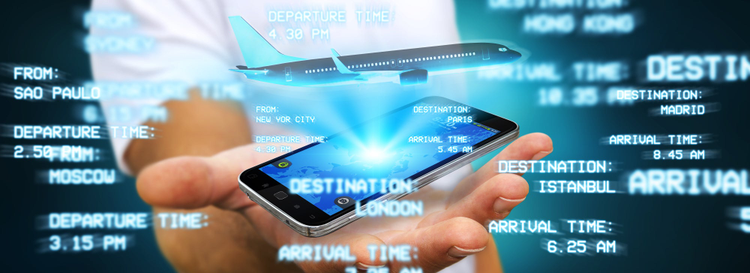Starting a new job is unnerving at the best of times, but stepping into a leadership position with a pandemic at your doorstep can really test your resolve.
This was the situation Shalini Rao confronted when she took up the role of CMO at Bangalore International Airport Ltd (BIAL) in November 2019.
Mere months after her tenure began, COVID-19 gradually began to weaken the aviation industry.
The 33.3 million passengers who had passed through Kempegowda International Airport, Bengaluru—a busy airport in southern India—were now largely confined to their homes, and for those where travel was essential, had major reservations about doing so.
To understand the passenger perceptions and expectations on air travel amid pandemic (from April – July 2020), BIAL conducted a digital survey by reaching out to passengers who had travelled through BLR Airport in the past.
The survey revealed only 24 percent of respondents were likely to fly once the airport reopened after lockdown, and only 27 percent felt comfortable with the overall airport experience.
Most passengers cited fears of being infected with COVID-19 (72 percent), family discomfort (39 percent) and concerns about safety and hygiene at the airport (17 percent) as reasons to avoid flying.
However, neither a steep decline in customer numbers nor the shift in sentiment have shaken Rao’s resolve to maintain a strong foundation in order to accelerate BIAL’s digital capabilities and improve its customer experiences.
Throughout this period, the company has created a fully digitised “Parking to Boarding” customer journey that is not only safer, but also positions BIAL as a global leader in the category.
“We were the first airport to go completely contactless end-to-end,” Rao explains. “It was quite something the BIAL team pulled off. We went from having a digital transformation ‘plan’ mapped out over a year to suddenly having to do-it-all in three weeks.”
A safe and seamless airport experience
So what’s involved in this rapid acceleration in digital and how has it helped assuage customer safety concerns?
Some of the contactless technologies BIAL has introduced include QR codes at check-in kiosks to replicate the experience on a mobile device; virtual video help desks to limit face-to-face interaction, and digital scanners to read the barcodes on boarding passes, eliminating the need for manual processing.
Rao also points to BIAL’s new queue management system which has helped address customer concerns around crowd size and control.
The digital system enables customers to choose less crowded counters through display of live waiting times on the screens at processing points, leading to lowered levels of stress.
Built-in heat maps allow airport staff to identify areas of overcrowding, enhancing operational efficiency and better manage passenger flow during peak hours.
“What’s been very heartening to see is that the adoption of these technologies has been very high,” Rao explains.
“There were a lot of questions among leadership about customer adoption: Will they? Won’t they? Do you need a parallel manual system? But the overwhelming response has boosted executive confidence and accelerated our digital transformation journey.”
For those passengers, who struggle with the technological side of the experience, BIAL has introduced “Digi Buddies” – on-the-ground staff who can assist travellers as required, with all safety precautions in place.
This customer uptake bodes well for BIAL’s rollout of a biometric boarding platform, under the Government of India’s DigiYatra programme. The technology ensures end-to-end facial recognition of passengers. Currently, those flying with Vistara and Air Asia can use their face as a boarding pass.
Keeping customers informed builds trust
For BIAL, accelerating digital transformation has been only one part of the solution to restoring consumer confidence in the airport experience.
Clear and consistent engagement with customers has been critical for building trust – even during lockdown when there were few customers to speak of, according to Rao.
“Every marketer, every person who’s in any form of business, needs to understand that if you want to keep your customers engaged, you must engage them,” she says.
Rao reflects that a massive learning for her has been the power of customer connection throughout the pandemic, regardless of whether their customers are flying or not.
“BIAL has relied on integrated communication channels to deliver clear and consistent messaging amid this year’s disruptions. We’ve worked closely with Adobe to really integrate and harmonise messaging across platforms,” Rao adds.
“With customer safety front of mind, we needed to ensure the same message was coming through on our website, in our press releases, on our social media and on the ground at the terminal.”
The Airport has also released a short film showing a detailed walk-through of the contactless customer journey. Hosted online and distributed via social media, the video was produced to demonstrate the extent of the safety precautions in place and put customers at ease.
https://www.youtube.com/watch?v=hVdyNy8rvAo
Since its launch, the video has been viewed more than 6.4 million times across social media channels. Rao also notes increased customer engagement has resulted in BIAL growing its subscriber base by 30 percent this year.
Looking to the Future
The Diwali holiday period in November saw a spike in travellers passing through BLR Airport, with the new digital capabilities helping to ensure a safe passenger experience.
“We knew it would be a trying time in terms of keeping customers safely distanced, but we’ve managed very well,” Rao says.
As Rao and her team look ahead, they’re hopeful the investment in customer safety and the nurturing of relationships during this period will position the airport for growth.
“We’re still living in uncertain times – I can’t say for sure what the plan is, but I can definitely tell you we’re all asking ‘what does it mean for us today?’” she says.
Above all else, this unprecedented period of time for the aviation industry has made the airport reimagine what’s possible regarding digital transformation, and the agility to bring initiatives to life for passengers.
